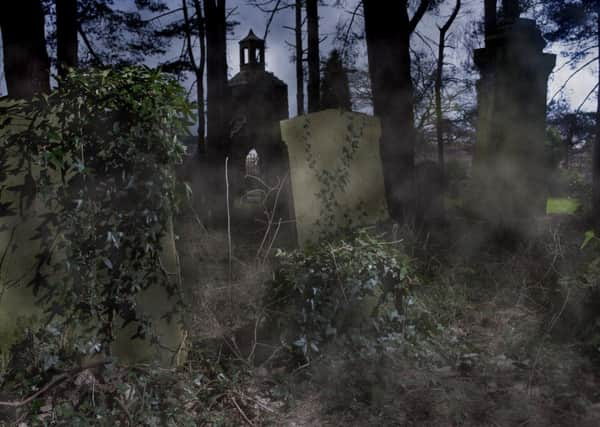East Dunbartonshire’s gruesome history mirrors the story of Burke and Hare


But some of East Dunbartonshire’s oldest graveyards also have a murky past, with grisly details to make the Burke and Hare on the back of your neck stand on end.
The area was targeted by bands of bodysnatchers, also known as the resurrectionists, plundering graveyards in search of the recently deceased.
Advertisement
Hide AdAdvertisement
Hide AdTo set the historic scene, this came at a time in the early 1800s when the thirst for medical knowledge was hampered by a drought of anatomical specimens to legally work on. And where there’s a market then some unscrupulous scoundrel with no sense of propriety will do their damnedest to provide a supply.
The best known of these in Scotland were William Burke and William Hare, who not only attempted to steal bodies in Edinburgh, but also went further and killed people in their efforts to provide corpses to the medical community.
When the law was changed to mean that any executed criminal’s body was given to science, it didn’t ease the situation. With only 77 executions in England a year, and over 1000 medical students in both London and Edinburgh, James Moore Ball’s book ‘‘The Sack-Em Up Men’’ says a ‘‘despised but necessary evil’’ began, in many cases undertaken by the medical students themselves.
One such case is thought to have happened at New Kilpatrick Church in Bearsden in 1832, where a watch was being kept. They fired shots at a group of would-be bodysnatchers. The following morning, at 5am, a Dr Carlaw was found dead on the path to his home at Maryhill. No post mortem was allowed and the funeral quickly held - Geoff Holder, author of the Scottish Bodysnatchers Gazeteer, says some believe he had been fatally injured in the raid.
Advertisement
Hide AdAdvertisement
Hide AdBaldernock Parish Church built a handsome watch-house to look out for its recently dead.
Thomas Watson’s book, Kirkintilloch Town and Parish, recounts some blood curdling details – bodysnatchers would be paid between £10 and £20 per body, depending on its condition. Teams of men could rob a grave in just one hour.
One case dates from this very month in 1831, and was all the more daring for happening in broad daylight, at the Auld Aisle Cemetery.
A young woman, Marion Cowie, daughter of farmer William Cowie from Oxgang, saw three men in the graveyard, digging with spades.
Advertisement
Hide AdAdvertisement
Hide AdShe ran along the Haw Loan Road and told the first person she saw. News ‘‘flew like wildfire from Kirkintilloch to Waterside’’, Mr Watson recounts, and search parties uncovered a man hiding in a drain.
One angry section of the crowd wanted to hang him there and then from a tree near the belfry, but instead he was marched along to the Tolbooth in Kirkintilloch. Along the way angry crowds ripped fences from the path and beat him. In the end he was jailed for just a few days.
His victim – A Mrs Murdoch, better known by her maiden name Jennie Scobbie – had been exhumed, doubled up and placed in a sack and laid against the cemetery boundary wall, before Marion’s prompt actions scared them off.
Another tragic tale is of an ‘‘inoffensive and half-witted’’ man called James McKenzie, known as Daft Jamie, who worked for a carrier between Kirkintilloch and Glasgow. Despite being loyal and conscientious, one night he never arrived for work.
Advertisement
Hide AdAdvertisement
Hide AdMr Watson said: ‘‘He was never seen or heard of afterwards and the belief then and since entertained is that he was kidnapped, murdered and his body sold.’’
Local communities worked hard to protect the recently deceased, as the hysteria – or some might say well-founded fear – of the resurrectionists spread. At St Machan’s in Clachan of Campsie a watch-house was built on top of the Lennox family vault to protect those within.
Cadder Church in Bishopbriggs had not one, but three, devices in place to stop the bodysnatchers – a watch-house, an iron coffin and an iron cage.
People would stand guard for days after a funeral, keeping the remains protected.
Advertisement
Hide AdAdvertisement
Hide AdYet the bodysnatchers still tried their luck. At St Mary’s Church, also then known as the Old Church, in Kirkintilloch a Mrs Dickson was recently interred. Her son Thomas Dickson, a flesher, stood guard for several nights, helped by friends. Mr Dickson had come prepared, with his butcher’s axe by his side. One night they heard a sound and saw a man climbing over the wall – Dickson struck out with all his might. Local speculation was that the would-be bodysnatcher was a Campsie man, who disappeared around this time only to return many weeks later, with a wooden leg.
But perhaps the most heinous of all is the story of a dead child, whose surname was Duncan. The poor child was buried at Auld Aisle, and rumours soon began to circulate that her body had been stolen. Her father and his friend exhumed the grave and found the child within, so buried her again.
The rumours continued, however, in particular that part of her had been taken.
Watson’s book said: ‘‘Her father and friend made another examination. This time they found the report true, for the head had been sawn off and abstracted.’’
Advertisement
Hide AdAdvertisement
Hide AdBut the Anatomy Act of 1832 changed everything and allowed licence holders to collect unclaimed bodies, often from prison and workhouses, for medical professionals.
The same law allowed people to donate their bodies to science.
From then on the dead of East Dunbartonshire were finally allowed to rest in peace.